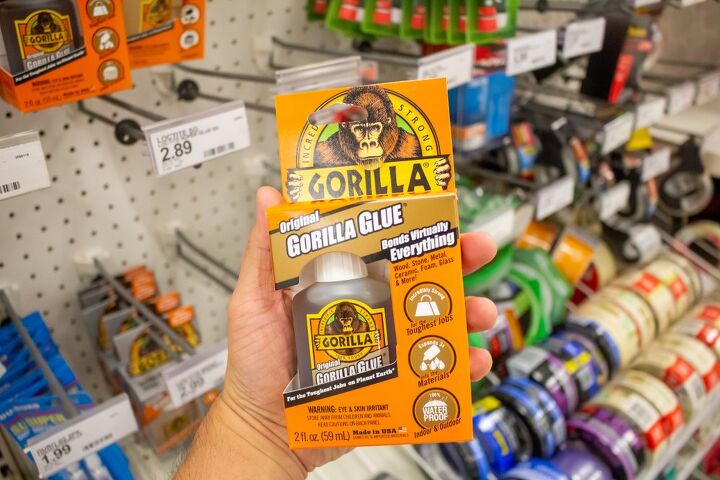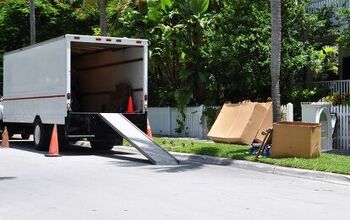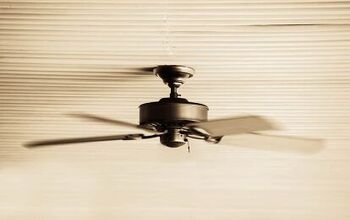How To Make Gorilla Glue Dry Faster (Quickly & Easily!)

One of the most popular and recognizable brands on the market, Gorilla Glue is a highly effective tacky glue. It is designed in specific to make certain types of surfaces stick and adhere to one another. They have super glue, wood glue, and a variety of other products.
Put the item with Gorilla Glue in a warm space and place it near a portable heater. Run a fan and aim it at the drying Gorilla Glue so that it dries quickly. You can also make Gorilla Glue dry faster with a blow-dryer, but that can also damage the surface of the join.
Speeding up Gorilla Glue’s dry-time is necessary sometimes, and you want to do it correctly. Follow along as we explore how you can make Gorilla Glue dry faster.
Does Gorilla Glue Dry Instantly?
Though Gorilla Glue is a particularly strong adhesive, it does not dry instantaneously. It usually doesn’t require all that much time to fully cure, but the time can vary depending on the setting. Temperature and exposure to the elements can also alter the time.
Generally speaking, you can expect the glue to dry completely within about an hour or so. Anything sooner than that and you risk bond failure. When you are joining two surfaces together, the Gorilla Glue needs to set properly to create the right bond.
Drying Gorilla Glue Dry Faster
Gorilla Glue is powerful and dries quickly, but it doesn’t always dry quickly enough. The easiest way to make Gorilla Glue dry quickly is to follow the instructions. However, you can speed the process up with simple tools such as a blow-dryer or portable heater to make Gorilla Glue dry faster.
It takes 6 simple steps to apply and dry Gorilla Glue quickly:
Step 1: Consult the Instructions
It doesn’t matter what you are using the Gorilla Glue for. Whether you are gluing together a broken chair, fixing a mug, or simply gluing a couple of random items together, the instructions for doing so will not change.
Know where on the two surfaces you will have to apply the glue. This will give you a better idea of not only the surface conditions involved, but any potential interference factors in the curing process. Gluing randomly will likely lead to a failure to set or will result in the two surfaces sitting unevenly.
Step 2: Sand the Areas
When you know where you want to apply the glue, sand those areas. Do so gently using a fine-grit sandpaper. You aren’t looking to take a lot of surface area away, but you simply want to give the Gorilla Glue a better chance to set.
Gorilla Glue is strong enough to hold even without this step but it will adhere much better without interference. Not only that, but a sanded area will allow the Gorilla Glue to cure faster than it might under normal circumstances.
Step 3: Wipe Down the Areas
Sanding is important towards cutting down the curing time. But if you don’t clean the sanded area thoroughly, none of this will matter. Grab a damp cloth and clean the two areas that you have just sanded.
You can place Gorilla Glue on a wet surface since it is waterproof, but it will take much longer to cure that way. When you have wiped away the dust from the surface, use a dry cloth to wipe away all of the moisture. It will ensure that the glue sets properly and adheres the two surfaces together properly, too.
Step 4: Glue
Now that your surfaces are prepared, it is time to glue them together. You don’t need to use much Gorilla Glue; it is a very strong adhesive when applied correctly. Use just a little bit and then press your two surfaces together firmly.
If you are able to, use a free hand to grab a paper towel. Use the paper towel to wipe away any excess glue that may ooze out of the joint. The thicker that your application of glue is, the longer the curing time will be so be cautious not to use too much.
Step 5: Allow it to Cure
In most cases, you can keep in in a dry, warm area and it should be cured a little earlier than normal. But there is another directly related method that can speed the entire process up just a little bit more than usual.
Use direct heat. You can apply direct heat to the glue. A portable heater will work fine but something like a heat gun will likely work better. Heating the glue will cut down on the overall curing time but be careful. You can possibly overheat the surfaces and do damage in the process. You can use a portable heater as well, just make sure to keep your surfaces just far enough away.
Use a fan. Cool, circulating air from a fan will get the job done, too. It may not work quite as well as using direct heat, but it is a simple method to implement. Simply put the two pieces in a dry, warm room, and use a fan to keep the air moving. It should speed the process up pretty significantly.
Step 6: Use Vinegar and Baking Soda
If you want to get really scientific, you can break out this old science class experiment to get the job done. All it takes is the Gorilla Glue and a little bit of vinegar and baking soda.
- Gorilla Glue and vinegar. Start out by mixing around 10 or so drops of Gorilla glue with about 5 drops of vinegar.
- Add baking soda. Next, add in the baking soda. Stir it in slowly as you go until the mixture becomes almost toothpaste-like in its texture. Just be careful not to make it too goopy or it will not be as pliable as you would like.
- Apply to the surface. After creating your mixture, it is time for the application. Spread it carefully over the surface(s) that you want to stick together. Make sure that you wipe away any of the excess glue as you go. Cleaning it up after it cures is definitely not an easy endeavor.
- Cut down your time. Under normal circumstances, it takes Gorilla Glue about an hour to fully dry and cure. With this method, you can cut that time down to about 45 minutes. Maybe a little less but not much more than that. It might not seem like much, but that is still better than waiting the full hour for it to dry.
Why Does Gorilla Glue Take so Long to Dry?
Compared to other glues and adhesives on the market, it might seem like it takes a while for Gorilla Glue to dry. Though it is just an hour (or more depending on the circumstances), there are others that dry at a moment’s notice. So, why does Gorilla Glue take so long?
Gorilla Glue doesn’t actually dry. Part of the reason that it takes Gorilla Glue so long to cure is that it technically does not dry. What happens is the glue sets through a chemical reaction. The speed of said reaction is impacted by factors like the presence of water and the temperature.
Polyurethanes. Most glues as well as polyurethanes will set faster in warmer conditions. All they need is a little bit of water to create the desired reaction.
Is Gorilla Glue Stronger Than Hot Glue
When it comes down to it, using either hot glue or Gorilla Glue rarely goes wrong. Both are very affordable. Each is quite easy to use. But the real point of discussion is about which one is stronger than the other.
Hot glue. When hot glue has had a chance to set, it can become quite strong. The issue is that the glue bubbles on the surface, eventually cooling and hardening. For smaller dollops of glue, that isn’t nearly enough to keep someone from picking it free.
Gorilla Glue. Though hot glue is quite strong, Gorilla Glue in all its various forms are both highly versatile and tough. Moreover, Gorilla Glue can provide a long-term solution by holding to bond surfaces with exceptional strength and durability.
What is Stronger Than Gorilla Glue?
Gorilla Glue has more than lived up to its name since it came to market. It works to adhere damn near everything together and manages to cure in about an hour. But how does it stack up to something like an epoxy?
Epoxies. An epoxy is considered to be the stronger of the two. It actually penetrates deep down into the surface. Not only that, epoxies will harden to a much greater degree than that of Gorilla Glue. And no matter what the adhesive is, there are limits to that strength.
Will Gorilla Glue Fill Gaps?
Minor gaps in joints or connections throughout the home can be minor annoyances. Even if they don’t provide great structural peril, they can act as a constant, annoying reminder that something is not quite right.
That said, Gorilla Glue was not created for filling gaps. Since Gorilla Glue is a polyurethane glue, that means it expands to around 3 or 4 times its original volume. That said, it is meant to adhere surfaces together, not fill those gaps.
Choose a filling solution. Solutions specifically created to fill gaps are done so for a reason. They provide better protection against moisture and will generally hold up better under the given conditions. Gorilla Glue is a strong substance but not even that will work effectively as a gap filler.

Ryan Womeldorf has more than a decade of experience writing. He loves to blog about construction, plumbing, and other home topics. Ryan also loves hockey and a lifelong Buffalo sports fan.
More by Ryan Womeldorf



























